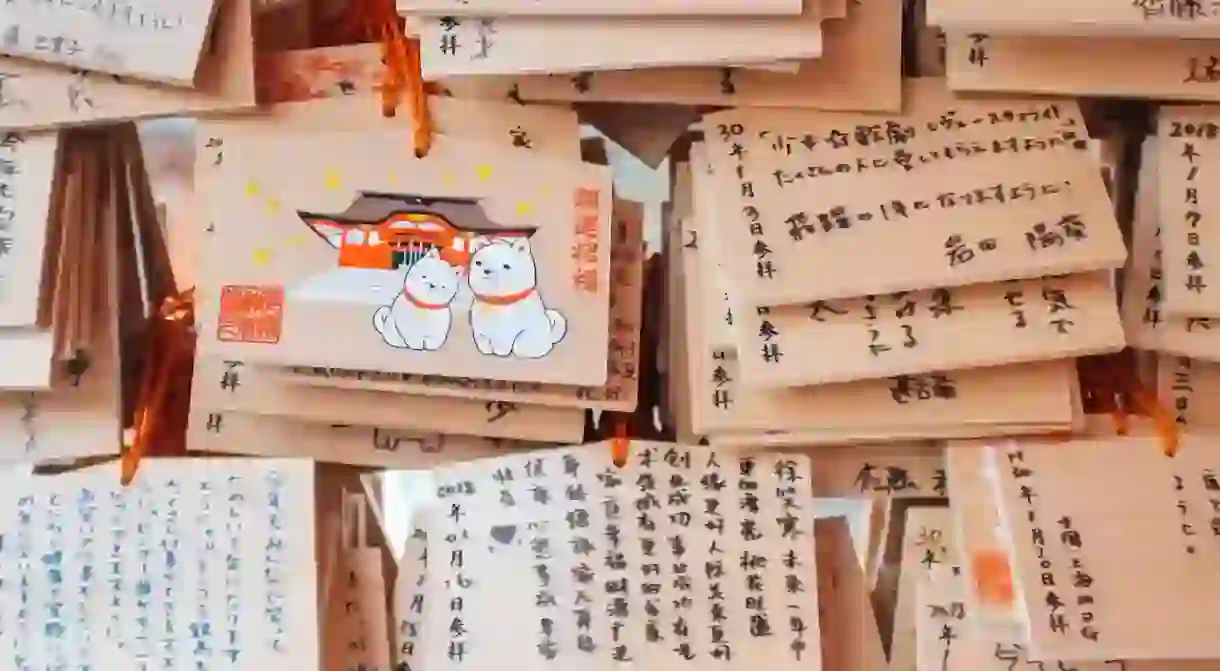How to Use Prayer Plaques at a Japanese Shrine

There are a whole bunch of things you should be sure to do while you’re in Japan, such as eating copious amounts of ramen, embarrassing yourself at karaoke and getting swept up in the madness that is Shibuya Crossing. However, beyond the fun and crazy pop-culture weirdness, chances are you’ll also want to make a pilgrimage to a local shine or two. A largely spiritual nation, Japan is dotted with numerous Shinto shrines, all overflowing with history and tradition and often surrounded by stunning gardens. A visit to a Shinto shrine is an experience like no other.
Wandering the carefully maintained grounds of one of the nation’s many shrines, chances are you’ll stumble across a few ema stacked one on top of another that lead to the main shrine entrance. Ema are wooden plaques, typically palm-sized, that are key to worship in the Shinto religion and tradition. Worshippers write prayers or wishes on them, and then hang them around the shrine, so that the kami, or spirits, can receive the wishes and bless the worshipper with their requests. You can typically buy them on the shrine grounds, as most shrines have small stores that sell good-luck trinkets and other small items. Adorned with the wish, the ema is typically left hanging until it is burned during a ceremony that is said to liberate the wish from the writer.

It’s said that during the early traditions of Shinto, horses were thought to carry the messages to the kami (gods). To get around the impracticalities of having a horse deliver the message, worshippers started to draw horses instead. In English, the word ema (絵馬) literally translates to “picture-horse”. If you inspect an ema today, you’ll typically notice an image of a horse somewhere on the plaque.

As time progressed, the ema evolved, but the message and purpose stayed the same. During the Muromachi period (1336-1573), a few shrines started to display images of other animals. The Inari Shrine started carrying fox ema, as the vibrant orange-and-red animals were often found there. During the Azuchi-Momoyama era (1568-1600) ema halls, similar to modern-day art galleries, started popping up for artists to display their ema designs. The contemporary ema became popular during the Edo period (1603-1868), when the plaques became smaller and were available for purchase and ready to hang.

Today, there is a huge variety of ema for sale, depending on where you go. Among the most common styles is a depiction of the current year’s zodiac, which in 2018 is the dog.
Ema typically cost about 500-1,000 yen ($5-10 USD). Many of the shrines operate on a honour system, where guests put money in a box at the shrine and then take a plaque. The money typically goes back into supporting the shrine.

There are no strict rules about how to make a wish on an ema. Some people write their wish over the image on the front, and then add their details (name, address, date) on the back. Others don’t want to ruin the design, and they instead try to squeeze everything on the empty side. You don’t have to know Japanese to make a wish. In fact, if you visit one of the more popular tourist shrines (such as Meiji Jingumae), you’ll notice a large collection of ema inscribed with a variety of languages. Once you’re finished writing, just hang the ema up, and hope your wishes come true.













